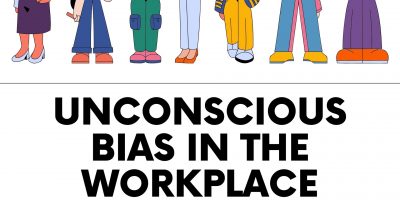
60+ Women in the Workplace Statistics in 2025
Transform your workplace into an inclusive and empowering environment for women with these eye-opening statistics. Unlock the potential of gender diversity and drive positive change in your organization.

The weight-normative paradigm permeates the worksite wellness industry. From biometric screenings to weight loss challenges and health coaching, the emphasis on body weight is entrenched in programming and philosophy.
It’s time to take a step back though. First, we must ask ourselves why we continue to hold tight to the weight-normative model when, plain and simple, it is just not working. Then let’s consider the weight-inclusive philosophy and how it might better support the individuals we serve.
Using data from a large sample of U.S. employer groups, a 2013 RAND Corporation report affirms what many already know to be true weight management programs don’t work.
The report found that individuals participating in worksite weight management programs experience an average weight loss of only one pound after the first year. This weight loss is not maintained and four years later the average loss is one-quarter of one pound.
While short term weight loss is well documented, the ability to maintain a suppressed body weight appears unsustainable. According to a health panel convened by the National Institutes of Health, participants who remain in weight loss programs typically lose approximately 10% of their weight.
However, one-third to two-thirds of the weight is regained within one year, and almost all is regained within 5 years.
Putting aside that dieting and energy restriction do not result in sustainable changes in body weight, one must also consider the harmful side effects of weight-normative messaging and programming.
Weight cycling is the most common side-effect of weight management programs. Individuals lose weight during the program, gain back the weight post-program, and then seek out another program to lose weight again. The weight loss/weight gain pattern is a vicious cycle that ultimately increases morbidity and mortality risk.
Weight cycling negatively impacts metabolic health and is correlated with the occurrence of type 2 diabetes.
The profound effect on psychological well-being is another cause for concern. Feelings of low self-esteem, diminished self-worth, body shame, failure, depression, and anxiety are closely associated with weight cycling.
Dysfunctional eating and exercise behaviors are also a by-product of weight management or the weight-normative approach.
The well-known Minnesota Starvation Study, conducted by Ancel Keys in the 1940’s, demonstrated the impact that calorie-restriction (a.k.a. weight management program) has on psychological well-being, namely a preoccupation with food and body image.
In this classic study, subjects reported fantasizing about food, fixating on their meals, and feeling intense fatigue, irritability, depression, and apathy while engaging in dieting behaviors.

A review published in the Journal of Obesity found there is growing evidence that individuals who try to achieve and maintain a weight-suppressed state are at risk for binge eating and bulimia nervosa.
Furthermore, two-thirds of women with anorexia report that their disorder began with deliberate efforts to reduce their body weight through energy restriction, according to the National Eating Disorder Association.
Lastly, a worksite wellness initiative that emphasizes healthy body weight creates an environment where weight stigma thrives. Weight stigma includes negative beliefs and attitudes toward individuals who do not meet an acceptable weight, size, or shape. Believing that fat people are lazy and lack willpower is an example of weight stigma.
Individuals living in larger bodies experience weight stigma frequently. Research indicates that stigmatizing larger bodies demotivates, rather than encourages, health-supporting behavior change.
Weight stigma is associated with feelings of body shame, body dissatisfaction, low self-esteem, depression, anxiety, and suicidal thoughts. Stigmatization and bias on the part of health care practitioners is also well-documented, resulting in lower quality of care.
Clearly, the overwhelming focus on healthy body weight and weight management is counterproductive to what most worksite well-being initiatives are attempting to achieve. The unintended consequences of a weight-normative approach do not align with the practitioner’s desire to support individuals in practicing health habits that support overall well-being.
Now what?
The weight-inclusive approach recognizes that everyone is capable of improving health and wellbeing independent of weight. The Health At Every Size (HAES) model provides a framework for health promotion practitioners to support the enhancement of physical and mental wellbeing of employees of EVERY size.
To better understand HAES it is helpful to contrast a weight-normative and weight-inclusive approach. The weight-normative approach makes many erroneous assumptions including that:
The weight-inclusive model holds that:
A brief look at the HAES research suggests that the weight-inclusive approach is effective at eliciting desired physiological and psychological outcomes. A review of the literature highlighted six randomized controlled trials in which a HAES approach was associated with statistically significant improvement in blood pressure, blood lipids, mood, self-esteem, and body image.
Furthermore, the retention rate associated with programs aligning with the HAES approach was higher than those typical with weight-normative programs.
Given the positive outcomes associated with the weight-inclusive approach and the unintended negative consequences associated with the weight-normative approach, it seems reasonable to suggest that the weight-inclusive approach may be a more effective framework for worksite wellness initiatives.
For worksite wellness practitioners wishing to apply the weight-inclusivity model to their programming and messaging, it is imperative to become more familiar with the HAES construct and the rationale for the application of weight-inclusivity in the worksite setting.
It will require time and patience to shift this paradigm. If you’d like to get started, consider the following strategies to begin to shift the initiative away from a body weight focus and move in the direction of weight-inclusion.
Dietitian & Wellbeing Professional
Browse our curated list of vendors to find the best solution for your needs.
Subscribe to our newsletter for the latest trends, expert tips, and workplace insights!

Transform your workplace into an inclusive and empowering environment for women with these eye-opening statistics. Unlock the potential of gender diversity and drive positive change in your organization.

From fostering inclusive environments to advocating for equal opportunities – elevate your organization’s commitment to gender equality with actionable advice.

How are Millennials transforming the workforce and companies’ cultures, and what does that change mean for the future of work? What makes this generation good leaders?

To what extent are the organizational culture and business outcomes affected by unconscious bias? What is unconscious bias in the workplace, and what can be done about it?
Used by most of the top employee benefits consultants in the US, Shortlister is where you can find, research and select HR and benefits vendors for your clients.
Shortlister helps you reach your ideal prospects. Claim your free account to control your message and receive employer, consultant and health plan leads.